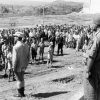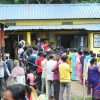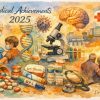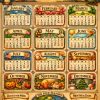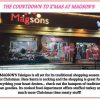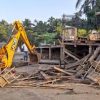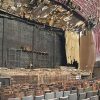Goa is abuzz with excitement as vintage bike and car owners, users, collectors and fans are decking […]

STUCK AT BASE CAMP!
Aug 02-Aug 08, 2025, Cover Story August 1, 2025WHEN I got my latest Magnetic Resonance Images (MRI) reports on Saturday, July 26, 2025 I thought that I had conquered Mount Everest and had been cured of spinal tuberculosis finally. A senior neurosurgeon friend who had first suspected that I may suffering from spinal TB about three years ago, looked at my MRI reports and told me I’m curfed. Be happy.
I’ve been cured of TB but the scars are all there left to see. He perhaps based his conclusion on the observation by Dr Deepa Nadkarni, the consultant radiologist of Radiance Diagnostics, that there is complete resolution of the pre-vertebral and paravertebral collection in the cervical region. In simple language, this means that the TB infection had been eliminated from the upper spine.
But by oversight or perhaps because he felt it was insignificant, he overlooked the small print. Which observed that the collection (infection in the pelvis and around the sacral vertebra, the tail bone, which contains sensitive nerve affecting the bladder and the lower pelvic area) showed significant reduction in size and extent, but continued to harbor the TB bacteria from the looks of it.
My treating doctor, Dr Sanat Bhatkar, who is an intervention neurologist at the Goa Medical College & Hospital, punctured my premature celebration of no TB. It was not all clear, he told me in a message from Hanoi, where he was attending a workshop; according to him while the recovery is very good, it is still not complete. While the cervical spine is freed of the TB bacteria, there is still some residual active disease in the lower spine.
Dr Sanat Bhatkar gently insisted that I continue TB medication till the disease is completely eliminated. He pointed out that “since the medication is active so well, it is definitely warranted that you continue medication.” When I protested that I was tired and had been on TB tablets for almost two years, as against the standard of eight to twelve months, he responded, “Your recovery for your age is superb and will continue to happen.” Clearly, my recovery is now delayed by the fact that I’m a super senior citizen at 78 years of age.
STARTED WITH BACK PAIN
IT all began in early 2022 some three years ago. I had an acute back pain. As reportedly in the case of Bollywood superstar Amitabh Bachchan, I was told, he too like me for months thought his back pain was courtesy his chair. Just like me Amitabh-jee too kept changing chairs for a few months. I kept changing my chairs from the standard executive chair to the Godrej executive chairs, which are claimed to be specially designed to provide back support. At one stage, I even bought an expensive recliner, hoping that it would give me relief. I also experimented with mattresses and pillows. Going to the extent of getting the extremely soft goose feather pillows from the Marriott Hotel, courtesy Dattaraj Salgaocar.
Since it was suggested that I should keep my head and shoulders elevated, I got a cot with hinges custom-made by my friend Lalit Mishra. None of it helped, and over a period of time, not only my back but my legs also started giving me trouble. Finally, in desperation, I approach my friend Dr Ajay Netalkar, the senior surgeon at the Manipal Hospital. Dr Netalkar arranged for me to have an MRI done at the Radiance diagnostics scanning centre at Dona Paula under the supervision of Dr Deepa Nadkarni. Dr Netalkar came across and after studying the MRI, dictated a report suggesting that I may have contracted TB of the spine. Dr Netalkar referred me to Dr Shivanand Bandekar, the then Head of Department of the Orthopedics at GMC where I have been admitted, treated for various health issues and discharged on and off over my 40 years in Goa.
SPINAL TB NOT SO COMMON
DOCTORS in public hospitals do not trust doctors from private hospitals. Dr Bandekar was not willing to accept the diagnosis of spinal tuberculosis. He in turn had several tests conducted, including over 30 x-rays and CT scans of every centimeter of my body. One of the CT scans showed a tiny abscess deep in the spine.
Dr Bandekar got interventionist radiologist Dr Pawan Kumar to conduct a Needle Aspiration Test (NAT); also the standard sputum test for pulmonary TB, along with the other blood tests were also conducted. There was no confirmation of any kind of TB at that time, let alone spinal TB. Dr Bandekar started me on the anti-TB program which is managed by the Union Department of TB. I was not convinced and although I started on the TB tablets I got into very serious side effects and asked Dr Bandekar why TB treatment on mere clinical presumption that I had TB. In retrospect this proved to be a major mistake on my part. He shrugged and I was discharged with “Koch’s disease” marked on my discharge papers.
After three weeks in the hospital, I returned home and got steadily worse. There came a time when I could not walk without the help of a walker. I had a bad fall with my walker in the washroom around September 2023. I went back to the Manipal Hospital, where an MRI was done on a very old machine. The reports confirmed my spinal TB and surgeon Dr Omkar suggested immediate admission in Manipal Hospital to start TB treatment and further surgery for my spine. It was nearing midnight and exhausted I said I need time to think, take me home. It would all cost a bomb of expenditure and I could not afford anyway. Manipal has acquired a reputation for needless high billing of patients. .
So once again I was admitted to the GMC when my back was worse. After a whole day in Casualty for decisions to be taken I was finally admitted to the Trauma Ward courtesy the kindness of Dr Rajesh Patil. By now apparently the infection had spread to my lumber region, which is the lower back near the tailbone. An ultrasound-guided needle aspiration test was conducted. The fluid was sent for examination to the Abbot Laboratory centre and came the conclusively prove that my spine was infected with TB bacteria, it was spinal TB, a more rare form of TB.
The common pay person’s perception is that TB is only to do with the lungs, pulmonary TB. After a lot of buck passing between Neurology and Orthopedic departments, I was finally dumped in the newly started Geriatric Ward No115. Never mind that the Geriatric Ward itself was created as a punishment posting for Dr Edwin Gomes, who had walked out of his post as in-charge of a Covid-19 Centre in Margao.
GEARIATRICS WARD NO.115
THE Geriatrics Ward is presumably for the follow-up treatment of patients in any crises and for dialysis patients. Dr Edwin Gomes, former HOD of the Medicine Department is kind enough to admit geriatric patients, including patients with diabetes, patients of strokes, and both pulmonary and non-pulmonary TB which involved long term recover. He puts in long hours with his team of doctors and interns regardless of any geriatric experience or training of his staff. Geriatrics is a still very budding treatment and care giving in India.
The TB bug had really brought down my weight to less than 40kg from an average of normal 60kg; Dr Edwin decided my TB was largely due to my poor nutrition. He also took the decision to reduce the standard TB protocol treatment of four tablets to two in my case, insisting that the dosage was linked to my body weight and he didn’t think I could handle the full dosage.
Needless to say Dr Edwin was obsessed by pumping me with nutritional protein supplements from the Apollo group of pharmeceuticals. I was literally forced to take these protein supplements although I could barely stomach them. In fact, all patients in the ward were on these protein supplements. They were freely given. Protein supplements amino acids treatment were my mainstay for the four months I was at the Geriatrics ward and in fact at one point the protein was directly put into my bloodstream after creating an inlet at my femoral artery near the groin.
For almost two weeks I was on very high doses of vitamin supplements. They had no impact at all and I did not put on any muscle or additional weight, it was a very slow recovery of sorts and during which time my better half struggled to pay caretakers day and night, while she managed home and our small online media weekly (goanobserver.in) which brings in any revenue.
DELAYED TREATMENT
SO the truth is that by the time my spinal TB was officially diagnosed and treatment started my spine (adding to the other previous damage done courtesy prolapsed rectum, surgery, re-surgery, a bout of malaria earlier on, a fake cardiac episode) it was clear the TB bugs were well and truly eating up my spine and soft tissues and there were painful abssecess). Perhaps this was compounded by doctors insisting that I be literally restricted to complete bed rest, not even get up for any reason to go to the washroom. In any case by that stage I was already unable to make it to the washroom, I found it difficult to get up from the bed.
But I must be grateful for physiotherapist Dr Atishri Kenkre who came into the picture and she made a major difference to my state of mind and body. With patience Dr Atishri had me sitting up in bed with some support. Later, I graduated to being able to sit in a chair or wheelchair besides the bed in the mornings and evenings for tea. At first it was only sitting on the bed with your legs dangling. A little later I was lifted from the bed to the wheelchair.
So four months passed on at the geriartrics ward No.115. I began to feel some movement returning to my right foot and in my right hand, which was most severely impacted by the damage to the spine. The day came when Dr Edwin Gomes said I was cured and I was discharged from the Geriatrics Ward, but I was to continue my TB medicines for another three months or longer until I was in total remission.
After being discharged I decided to do an MRI at Radiance in June 2024, which showed that the TB bacteria was still active in pockets of my spine. I consulted Dr Edwin again who explained it to either low dosage of medications or insufficient protein intake. I was transferred to the care of the Head of Department of Neurology Dr Teresa for further consultation and treatment and perhaps rehabilitation of my nervous system which was also damaged.
Since I did not have the energy to go to her OPDs at the GMC, I preferred to meet her colleague, the much younger Dr Sanat Bhatkar at his consulting room. Dr Bhatkar asked me to continue the TB medicine but stressed that the most important aspect of my treatment was physiotherapy.
And fortunately I found a young, very professional and compassionate physiotherapist in Dr Mrugna Prabhudesai. It is she came home twice and thrice a week to get me to walk anew without any support, within the first three or four months I think. Dr Mrugna was innovative and focused on my total rehabilitation. She concentrated on my right side, which was badly impacted during my time at the GMC Geriatrics ward. After I was into good physio regularly in less than a year I am not only able to walk, but used my right hand to a limited extent. The fear is that some of the spinal damage may be irreversible because of something called osteoporosis or worse still osteapenia.
MRI MOST EXPENSIVE
I GOT MRIs done every six months to monitor the state of my spine and the TB bacteria. Every MRI over the last 18 months has shown an improvement both in the state of my spine and the reduction in infection. My personal experiential belief is that the worse is over and I have put on weight because I feel like eating now. Alas, I’m not in the clear however for while my upper spine is freed of TB bacteria, my lower spine in the pelvic region, reportedly still shows residual symptoms of the stubborn infection.
Now I do not know how long it will take to be completely cured. I have run out of patience. Even more then me my dedicated caregiver, my better three- quarters Tara Narayan, who herself is 75, is tired and exhausted and I can see it. She needs to attend to her heart health issues too. Many do not think I’m a niz Goenkar although I have lived in Goa for 40 years plus, we do not have a support system. Our dearest friends have passed away or are fading away themselves in their private residences. My TB has lived with me for at least three years now and I have gained some victory over it mercifully, it is unrealistic to expect even the closest of friends to hang around to come and cheer me up indefinitely.
I am in two minds: To continue my TB treatment of the spine some more or to let it go. In Goa I do not think there are any spinal TB specialists although there are other spinal TB patients here I do not believe that the same protocols should be applied to both pulmonary TB and spinal TB. TB can take up residence in any part of the body including the brains. My neurologist friend Dr Sanat Bhatkar has been doing a great job of monitoring my spine, together with Dr Mrugna, my physiotherapist continuing to visit me to get me moving more and more and to stop getting depressed.
In the long term I may be totally cured but at the 78 years I do not have the luxury of time on my side. Our savings are exhausted due to all the expenses of healthcare (which insurance won’t pay for I did not do any surgery for TB), I am considering moving to some seniors assisted place to give a break to my wife from the trauma of caring for me needs, especially when there is an end in sight. I cannot walk long distances or use my right hand for eating, shaving and most importantly of all, writing or signing checks. My fingers become numb when I used my keyboard on my smartphone for a long period of time. I am yet to overcome the dependencies afflicting me.
There is no infrastructure at least in Goa for the rehabilitation of TB patients after they’re been through TB treatment, lease of all any other TB but pulmonary TB. In the case of the most common pulmonary or lungs TB a simple sputum test reveals infection is there or not. A chest X-ray too is enough to confirm a firm diagnosis. These diagnostic tools are inexpensive comparatively and may be done even in neighborhood clinics.
Unfortunately, in the case of spinal TB only MRI and a needle aspiration test can confirm infection or no infection. MRIs are expensive diagnostic tools. The radiology department at government hospitals including the GMC are in a very bad state. Also in public hospitals you have to wait for long hours irrespective of your age or energy levels.
Also, the treatment of spinal TB is invariably left to orthopedic or neurology consultants. Both these specialists charge special charges to monitor the state of the spine which is central to all bodily health and a very complicated subject. Even neurologists monitoring your spine think surgery can help, surgery of the spine is risky and expensive – that is if the spinal damage due to TB can be surgically rectified. So much so that ultimately it is only a good and dedicated physiotherapist who can rehabilitate the spine as much as possible.
As for the DOT program of the government of India for the eradication of TB, from what I understand it is limited only to addressing pulmonary TB and not the other complex TB diagnosed. The DOT program is monitored by the state TB officer who is a general physician with no expertise in TB. The DOT program basically just supplies the ATB tablets free to all those registered as TB patients. A standard protocol is followed with no correlation between the state of the TB infection and the dosage required or the variation in the composition of the combined drug formulae supplied under the program.
Standard TB chemotherapy treatment consists of four different antibiotics in one tablet or capsule, to make compliance easy for working class and migrant labor TB patients. This is in the popular belief that TB is essentially a poor man’s disease. In Goa I understand that 90% of pulmonary TB patients are migrants. The monitoring of TB cases at least in Goa is done by the urban and primary health centres, which again do not have trained staff for the management of the disease or follow-up with patients. There are no chest physicians at primary health centres. Many do not have X-ray equipment.
However, an employee of the state TB department very faithfully comes and supplies me my latest dose of ATB medicine whenever it is gets over. There has been no variation either in the dosage or composition of the TB tablets. Not even the TB officer or the staff of primary health centres know how the dosage should be adjusted depending on the progress of the cure. In theory there is provision for paying Rs1,000 a month to all TB patients, including pulmonary TB patients, by way of nutritional allowance. Last year the amount was raised from Rs500 to Rs1,000. This is not enough even to buy two eggs daily. Nobody knows if the allowance translates to better food for the patients.
PROTOCOLS FOR NON-PULMONARY TB
IN CONCLUSION, it is clear to me that there is an urgent need to establish protocols for treatment of non-pulmonary TB. There is an urgent need to examine if treatment for pulmonary TB can be extended to spinal and brain TB. We need to have support systems for spine TB patients who run the risk of losing their livelihood because of TB. While there are special hospitals for pulmonary TB there are no facilities for spinal and other non-pulmonary TB patients. In the absence of a very dedicated facility for the treatment of non-pulmonary TB a patient may as well get cured but once again go into a relapse if there is no follow-up of any kind or continuing checks and rehabilitation with alternate ways of healthcare.

